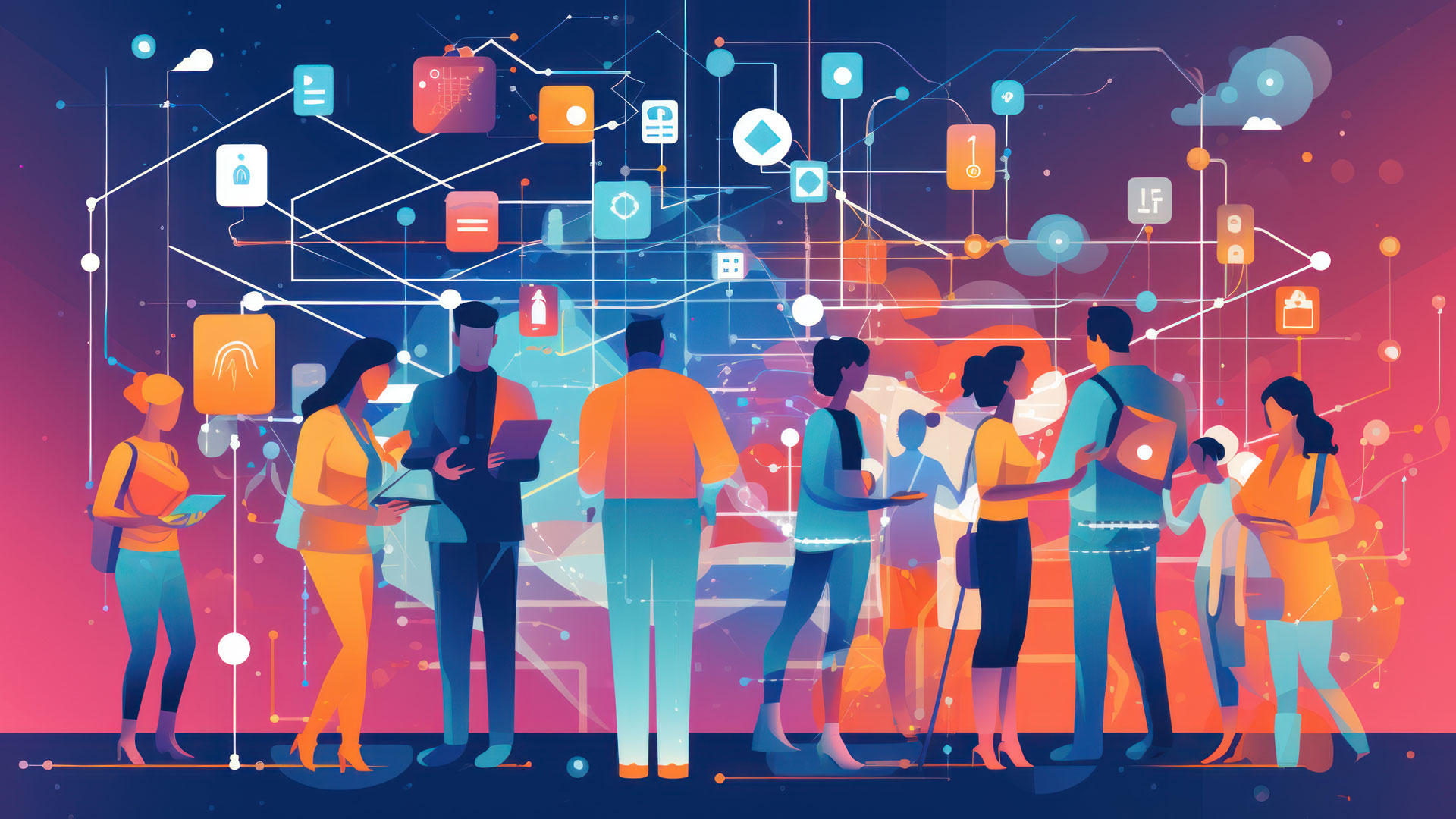Luke Smith offers ideas on how to reassure employees they won’t be replaced by artificial intelligence
As AI becomes increasingly capable, even employees in highly skilled industries are becoming concerned about job security. One recent study showed that 24% of Americans believed AI might make their job obsolete.
As a business leader, how can you help employees understand that your organisation isn’t planning to lay everyone off and replace them with bots? It can be challenging, especially given the number of layoffs that happened in 2023. However, by fostering trust and providing additional development opportunities, you can help your employees feel secure in their roles.
Why are employees worried about AI?
Historically, most technological advancements have replaced jobs in some way. Automation has eliminated many repetitive tasks in assembly work, for example, which impacted the people who worked at factories.
More recently, the release of ChatGPT at the end of 2022 caused significant concern for writers, marketers, and other creatives. Their anxiety wasn’t unwarranted for example, IBM announced they would stop hiring for 7,800 jobs that could be done by AI.
Some organisations immediately laid off human workers and tried to replace them with AI-powered technology. However, many of these efforts failed spectacularly.
By fostering trust and providing additional development opportunities, you can help your employees feel secure in their roles
In one instance, an effort to replace human eating disorder counsellors with AI resulted in harmful advice. In another example, Gannett tried to use AI instead of reporters for local high school sports, only to publish embarrassing botched articles. These failures showcase why human involvement is essential in roles ranging from customer support to journalism.
It will take time for some companies to realise that they can’t simply replace employees with AI. In the meantime, workers in creative roles are concerned about job security.
Fostering trust in your organisation
The best way to respond to these fears is to help your employees understand how your organisation plans to use AI and how employees will work alongside the technology.
Shift the mindset from fear to opportunity
The first step is to establish a written strategy for how your organisation plans to use AI to improve operations, emphasising how employees will work alongside AI rather than be replaced by it.
When your team begins to understand that AI represents an opportunity to do less work they don’t enjoy so they can focus on work that’s impactful, they’ll start to see AI as an opportunity instead of a threat. This will transform the energy in the office, boost employee confidence, and help your team lean into the idea of increasing the company’s efficiency.
Emphasise human involvement
It’s important to assure your employees that you aren’t an organisation that sees them as replaceable by AI. You can do that by emphasising the importance of having humans involved in writing, creating strategies, planning projects, and more.
Generative AI is a set of algorithms that creates content based on patterns. It is not a creative or critical thinker, it can’t check facts, nor can it craft stories with a compelling, humourous, or thought-provoking voice. Help your team understand the capabilities and – even more importantly – the limitations of AI so they can see where humans add value.
Even if AI can create written content, that content needs to be edited, infused with emotion, and targeted to a specific audience. Humans also need to create a strategy for what topics to write about, how to distribute the content, and how to encourage the reading audience to become customers.
Encourage people to learn about use of AI
Once your team understands how they’ll work alongside AI, it’s time to give them an opportunity to learn the ins and outs of the technology.
When your employees are learning and experimenting with AI in their daily work, they’ll learn the best ways that the tools can help them be more efficient and productive. This can help them gain confidence about the role of AI in their lives, and it can help your organisation identify the best use cases for AI technology.
Over time, you might decide to include training on specific AI tools as part of your new hire process or as part of employee development in specific departments.
Provide upskilling and reskilling opportunities
Even without AI, work is changing at an incredible rate. LinkedIn found that the skills needed for the same job changed 25% between 2015 and 2021. That’s why successful organisations focus on creating a culture of continuous learning.
What we’ve seen with technological advances in the past is that yes, some jobs are replaced, but more are created to manage the technology and to work in industries that didn’t exist before. The World Economic Forum predicted in 2020 that, by 2025, technology would create 12 million more jobs than it eliminates.
However, those new jobs require different skills which is why it’s important to invest in upskilling and reskilling your workforce. When your company stays on the cutting edge of what skills will be needed in tomorrow’s companies, your employees will recognise your commitment to their development and be more loyal to your organisation as they grow.
Create confidence around AI
Some companies are replacing employees with AI, and your employees will wonder if your organisation will do the same. By clearly defining how your company will use AI, emphasising the importance of human creativity, and helping your team learn AI and other important skills, you can replace fear with confidence.
AI is a great way to increase productivity when used alongside human ingenuity – enjoy the benefits of investing in both technology and human work!
Luke Smith is a freelance writer




